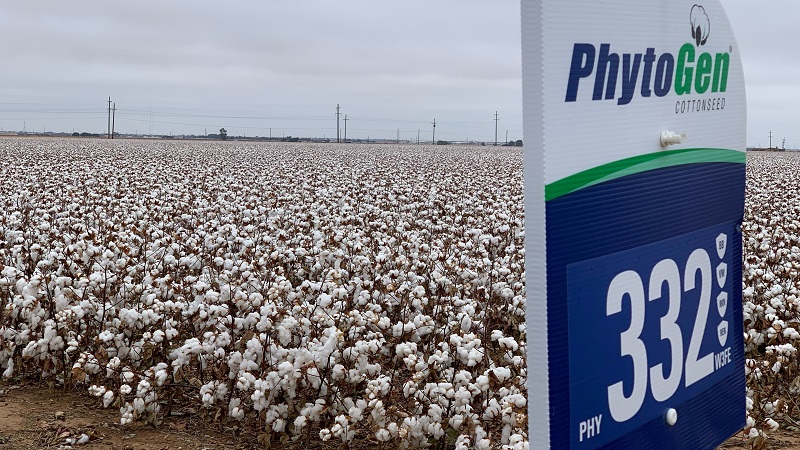Option Hedging: The Virtue of Second Best
By Sterling T. Terrell
Second best is not all that bad, is it?
Phil Mickelson has come in second place in the U.S. Open six times, and he has an estimated net worth of nearly $200 million. This is because coming in second place (or close to it) time after time, while everyone else is inconsistent, can make you one of the best golfers in the world.
In the world of cotton marketing, can second best work?
I have talked about selling before. I believe I actually said, “If the price works for you, sell!” And Dr. O.A. Cleveland once said, “If you like the price enough to plant it, then like the price enough to sell it.”
I wish I had said that first. But I digress.
This simply means that when prices are attractive, producers should consider locking in prices or “selling forward” the to-be-harvested crop. In this pursuit, options are a great tool – specifically, hedging cotton prices through buying put options. This means the buyer of a put option has the right, but not the obligation, to sell at an agreed-upon price at some point in the future. This right comes with a cost (premium).
The reason I like option hedging is simple – in most cases, buying put options as a hedge against your cash crop will be the second best choice you could have made. It also allows us to stay away from the frequently seen “Texas-Hedge, all-or-nothing, paralyzed-with-indecision marketing plan.”
Let’s look at three examples, using persons X, Y and Z.
15 Cent Cotton Price Decrease
In July, Dec. Cotton Price = $.85/lb
X hedges with Forward Contract @ $.85/lb
Y hedges with Put @ $.85/lb (Premium Cost = $.05/lb)
Z does not hedge
November, Dec. Cotton Price = $.70/lb
X sell price = $.85/lb
Y sell price = $.80/lb
Z sell price = $.70/lb
In the first example, X forward contracted his cotton and received the best price. Y, the put option buyer, did second best by locking in his cotton at $.85/lb, but receives a net of $.80/lb after subtracting the cost of purchasing the put contract. Z simply looks foolish for doing nothing when he had the opportunity to lock in higher prices.
15 Cent Cotton Price Increase
In July, Dec. Cotton Price = $.85/lb
X hedges with Forward Contract @ $.85/lb
Y hedges with Put @ $.85/lb (Premium Cost = $.05/lb)
Z does not hedge
November, Dec. Cotton Price = $1.00/lb
X sell price = $.85/lb
Y sell price = $.95/lb
Z sell price = $1.00/lb
In this scenario, X forward contracted his cotton exactly the same as before, but now looks foolish for locking in his prices so low. Again Y, the put option buyer, did second best by selling his cash crop for $1.00/lb, but nets $.95/lb after subtracting the cost of the put. Z gets $1.00 for his cotton and looks like a genius for doing nothing until harvest time.
Cotton Prices Are Constant
In May, Dec. Cotton Price = $.85/lb
X hedges with Forward Contract @ $.85/lb
Y hedges with Put @ $.85/lb (Premium Cost = $.05/lb)
Z does not hedge
November, Dec. Cotton Price = $.85/lb
X sell price = $.85/lb
Y sell price = $.80/lb
Z sell price = $.85/lb
With prices constant, it doesn’t matter if the cotton was forward contracted or sold for cash. Both X and Z received $.85/lb, and Y – yet again – is second best after the cost of put option is factored in.
However, in the final example, is our put option buyer really worse off than the other two growers?
Arithmetically, yes, because he received five cents per pound less for his cotton lint. But, look at the risk profiles for all three.
In the final example, the option buyer Y actually looks quite good. He sold cotton at $.80/lb, but only risked $.05/lb in the premium cost of the option to get to that price. However, X and Z sold cotton at $.85/lb cotton, but both risked potentially unlimited amounts of forgone revenue in doing so.
That’s because X, who forward contracted his cotton, ran the risk of cotton going to $1.00/lb (or higher) and having to deliver cotton at $.85/lb. That equals at least $.15/lb in forgone revenue. Z – who always sells cash cotton – also ran the risk of cotton going to $.70/lb (or lower) and also faced a potential $.15/lb (or more) in forgone revenue.
There are other examples to discuss using my numbers when prices fluctuate between $.80/lb and $.90/lb that show options hedging as the third best alternative. But to that I would ask the same question – how much potential revenue (like in scenario three) was risked for a marginally higher price?
Think about it.
Buying put options can be a powerful marketing tool for producers to minimize risk and lock in high prices. They also have the added benefit of leaving the topside – for potentially higher prices – open to increase.
So here’s to second place…and marketing cotton like Mickelson plays golf.
Sterling T. Terrell is a Commodity Broker at Tru Trading Co. and Independent Cotton Analyst. E-mail him at sterlingterrell@hotmail.com.
The opinions expressed in this piece are that of the author and the author alone. There is substantial risk of loss to futures and options trading. Past performance may not be indicative of future results. One should carefully consider their financial suitability prior to trading.








